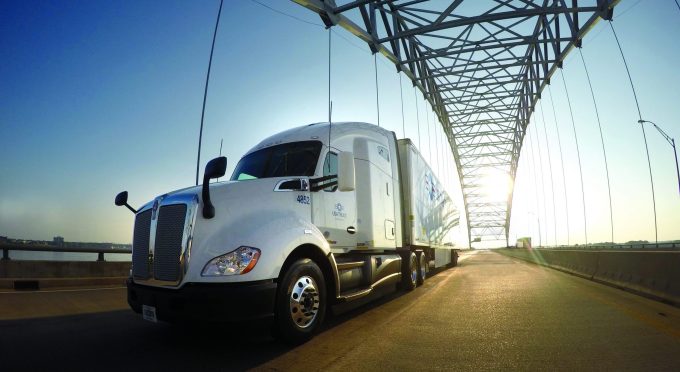A long slow road to recovery for US trucking – some operators won't make it
The recent cut in interest rates is not lifting the US trucking industry out of ...
GM: RAISING THE ROOF GGM: IN FULL THROTTLE GZIM: MAERSK BOOST KNIN: READ-ACROSSMAERSK: NOT ENOUGHMAERSK: GUIDANCE UPGRADEZIM: ROLLERCOASTERCAT: HEAVY DUTYMAERSK: CATCHING UP PG: DESTOCKING PATTERNSPG: HEALTH CHECKWTC: THE FALLGXO: DEFENSIVE FWRD: RALLYING ON TAKEOVER TALKODFL: STEADY YIELDVW: NEW MODEL NEEDEDWTC: TAKING PROFIT
GM: RAISING THE ROOF GGM: IN FULL THROTTLE GZIM: MAERSK BOOST KNIN: READ-ACROSSMAERSK: NOT ENOUGHMAERSK: GUIDANCE UPGRADEZIM: ROLLERCOASTERCAT: HEAVY DUTYMAERSK: CATCHING UP PG: DESTOCKING PATTERNSPG: HEALTH CHECKWTC: THE FALLGXO: DEFENSIVE FWRD: RALLYING ON TAKEOVER TALKODFL: STEADY YIELDVW: NEW MODEL NEEDEDWTC: TAKING PROFIT

The constant pain in the US trucking market is forcing more players out of the business and is spreading from owner-operators to larger outfits.
Truckstop, a major freight matching service, and Bloomberg Intelligence have conducted a survey of smaller operators, and the results show slumping rates and increased costs have brought the spot market, on which these players predominantly focus, close to a “critical point”.
However, the report expresses optimism that rates are close to bottoming-out and poised to rise – but is also uncertain about how soon a recovery may kick in, which is sapping operators’ endurance, the authors note.
As many as 10% of carriers participating in the survey said they planned to cease operations in the next six months – to either to join larger carriers or exit the business.
More than half reported moving fewer loads in Q2 23 than a year earlier, and pricing has continued to decline. Spot rates dropped an average 19% during the period. And while 39% said they expected rates to improve over the following three months, 24% anticipated further decline in prices.
And trucking indices show the downward spiral continued in July. The monthly index published by DAT Freight & Analytics, which operates one of the industry’s largest online freight marketplaces, shows month-on-month volume drops of 7% and 3.4% for the dry van and reefer spot markets, respectively. National average load-to-truck ratios were down in both categories.
The spot van rate per mile was down 1 cent from June, and 56 cents lower than a year ago, while the spot reefer rate sank 3 cents from June, and 60 cents from a year ago.
Numbers from Cass Information Systems show an 8.9% YoY drop in shipments in July, while expenditure slumped 24.4%. A major factor here was a 27% fall in the price of fuel. The Cass linehaul index has declined for 14 straight months.
So far the worsening market conditions have taken a toll mostly on owner-operators and carriers with five or fewer trucks, but increasingly they are claiming larger players too.
Motive, a telematics company, reported that last month the percentage of carriers with five or fewer trucks dropping out of the market shrank by 5%, while exits among bigger-fleet operators was up from 12% to 17%.
And Cass Information Systems analysts expect the tally of failures for the full year to end up 18% lower than in 2022.
Tim Denoyer of ACT Research, who co-authored the Cass report, pointed to private truck fleets as a factor to keep capacity elevated. He said: “We think it’s unlikely that industry capacity will broadly tighten until pressure from private fleet growth eases, which looks unlikely this year.”
But cautious optimism has come from the top end of the market. In their recent earnings calls, executives of Knight-Swift and Schneider noted that the de-stocking cycle appeared to be coming to an end while trucking capacity continues to shrink, giving cause for a modest improvement in demand for the peak season.
Schneider CFO Stephen Bruffett believed it would not require dramatic changes to achieve a better equilibrium in the market. However, he added he would not describe expected improvement in the market as a “recovery”.
Comment on this article